Pass Your CompTIA CASP Certification Easy!
CompTIA CASP Certification Exams Questions & Answers, Accurate & Verified By IT Experts
Instant Download, Free Fast Updates, 99.6% Pass Rate.

CompTIA Advanced Security Practitioner (CASP+) CAS-004
Includes 645 Questions & Answers
$139.98
Or Purchase CASP Exams Individually
| CAS-004 | CompTIA Advanced Security Practitioner (CASP+) CAS-004 | $69.99 | Add to cart |
| CAS-005 | CompTIA SecurityX | $69.99 | Add to cart |
Download Free CASP Practice Test Questions VCE Files
| Exam | Title | Files |
|---|---|---|
Exam CAS-004 |
Title CompTIA Advanced Security Practitioner (CASP+) CAS-004 |
Files 4 |
Exam CAS-005 |
Title CompTIA SecurityX |
Files 1 |
CompTIA CASP Certification Exam Dumps & Practice Test Questions
Prepare with top-notch CompTIA CASP certification practice test questions and answers, vce exam dumps, study guide, video training course from ExamCollection. All CompTIA CASP certification exam dumps & practice test questions and answers are uploaded by users who have passed the exam themselves and formatted them into vce file format.
CompTIA CASP Certification: Mastering Advanced Cybersecurity for Enterprise Success
The CompTIA Advanced Security Practitioner (CASP) certification is a high-level credential in the cybersecurity industry, designed to validate the skills and knowledge required for advanced security roles. Unlike entry-level certifications, CASP focuses on practical application, strategic thinking, and enterprise security solutions rather than basic concepts. This certification is ideal for professionals who are responsible for designing and implementing security systems at an organizational level. It emphasizes a hands-on approach to solving real-world problems while integrating security policies with business objectives.
CASP is often viewed as a bridge between technical expertise and leadership capability. While many certifications focus purely on technical proficiency, CASP prepares candidates to think critically about security challenges, evaluate risks, and develop strategies to protect complex enterprise environments. Security architects, engineers, and senior analysts benefit from CASP as it positions them for roles that require both tactical execution and strategic oversight.
Career Benefits of CASP Certification
Obtaining CASP certification can significantly enhance career prospects. Employers recognize CASP as a mark of advanced knowledge in cybersecurity and risk management, making certified professionals more competitive for senior roles. Some of the key career benefits include:
Advancement into senior security roles, such as security architect, security consultant, and IT security manager.
Increased credibility with employers and clients, demonstrating a comprehensive understanding of enterprise security practices.
Access to higher-paying positions in cybersecurity due to the advanced level of expertise.
Enhanced ability to contribute to strategic security decisions, risk assessments, and policy development.
In addition to professional recognition, CASP certification helps professionals develop skills that are immediately applicable in their current roles. It allows them to handle complex security issues with confidence, implement solutions that align with business goals, and stay ahead of evolving cyber threats.
Exam Structure and Objectives
The CASP certification exam is designed to test both technical proficiency and strategic understanding. It covers a wide range of topics essential for enterprise security professionals. The exam focuses on practical problem-solving, critical thinking, and the application of security principles in real-world scenarios. Key domains include:
Enterprise Security: Candidates are tested on their ability to implement advanced security solutions in complex enterprise environments. This includes network security, cloud security, virtualization, and the integration of various technologies.
Risk Management: The exam emphasizes identifying, analyzing, and mitigating risks while aligning security strategies with business objectives. Candidates must demonstrate an understanding of threat modeling, risk assessment, and compliance requirements.
Research and Analysis: Professionals must stay current with emerging threats and trends. The exam evaluates the ability to apply threat intelligence, analyze vulnerabilities, and implement proactive security measures.
Integration of Computing, Communications, and Business: Candidates must show proficiency in aligning security measures with organizational goals, ensuring compliance, and supporting operational efficiency.
The exam format includes multiple-choice questions, scenario-based questions, and performance-based simulations. Unlike entry-level certifications that often emphasize memorization, CASP requires candidates to demonstrate the ability to apply knowledge in practical situations.
Ideal Candidates for CASP
CASP is tailored for experienced IT and cybersecurity professionals rather than beginners. It is intended for those who already possess a solid foundation in IT security principles and are looking to advance their careers. Typical candidates include:
Security analysts who aim to progress to senior roles and require advanced security skills.
Network and systems engineers responsible for integrating security protocols into complex IT environments.
IT managers and consultants tasked with enterprise-wide security planning and implementation.
Candidates should be comfortable navigating complex technical scenarios, managing risk, and making strategic decisions. CASP certification is particularly valuable for professionals who are involved in both the technical and managerial aspects of cybersecurity.
Knowledge and Skills Developed
Preparing for the CASP certification equips professionals with advanced knowledge and skills in several critical areas. These include:
Cryptography: Understanding advanced cryptographic methods, their practical applications, and how to implement them to secure enterprise environments.
Threat Analysis: Evaluating security threats, identifying vulnerabilities, and implementing appropriate countermeasures.
Enterprise Security Architecture: Designing and implementing secure networks, cloud infrastructures, and virtualization environments.
Risk Management: Developing risk management strategies, performing risk assessments, and integrating security policies with business objectives.
Incident Response and Recovery: Preparing for and managing security incidents, including developing recovery strategies and minimizing business impact.
Compliance and Governance: Understanding regulatory requirements, ensuring compliance, and aligning security measures with organizational policies.
These skills allow CASP-certified professionals to operate effectively in senior security roles, making informed decisions, and guiding their teams to maintain a secure organizational environment.
How CASP Differs from Other Certifications
CASP stands out from other cybersecurity certifications due to its focus on advanced, practical skills and strategic thinking. While certifications like Security+ cover fundamental concepts, CASP emphasizes enterprise-level security management, risk assessment, and technical problem-solving. Key differences include:
Level of Expertise: CASP targets experienced professionals, while many other certifications are designed for entry-level or intermediate learners.
Practical Focus: The exam assesses the ability to apply knowledge in real-world scenarios rather than memorizing facts.
Strategic Orientation: CASP evaluates understanding of how security strategies align with business objectives, making it suitable for decision-makers.
These distinctions make CASP a valuable credential for professionals who want to demonstrate not only technical proficiency but also leadership and strategic insight in cybersecurity.
Preparing for the CASP Exam
Effective preparation for CASP requires a combination of hands-on practice, study, and understanding of advanced security concepts. Candidates should focus on:
Reviewing exam objectives and understanding the domains tested.
Gaining practical experience with enterprise security systems, including network security, cloud environments, and virtualization.
Studying advanced topics such as cryptography, risk management, and incident response.
Engaging in scenario-based exercises to develop problem-solving skills and apply theoretical knowledge.
Utilizing study materials, practice exams, and professional training courses tailored to CASP.
Consistent practice and exposure to real-world security challenges are essential for passing the exam and applying the knowledge effectively in professional settings.
Career Paths After CASP Certification
CASP certification opens doors to a variety of advanced career opportunities in cybersecurity. Some potential roles include:
Security Architect: Designing and implementing secure systems across the enterprise.
Senior Security Engineer: Leading security initiatives and providing technical guidance.
IT Security Consultant: Advising organizations on best practices for risk management, compliance, and security strategy.
Incident Response Manager: Overseeing response to security breaches and minimizing impact on business operations.
Cybersecurity Analyst Lead: Coordinating security operations and analyzing threats at a strategic level.
These roles often involve responsibility for critical enterprise security decisions, risk management, and ensuring that security aligns with business goals. Professionals with CASP certification are often viewed as trusted advisors in their organizations.
Industry Recognition and Value
CASP is globally recognized and valued by employers across industries. Organizations look for CASP-certified professionals to handle complex security challenges, protect critical infrastructure, and implement advanced security protocols. The certification demonstrates a commitment to professional development and validates the ability to handle advanced security responsibilities. Employers benefit from having CASP-certified staff who can address high-level security issues, reduce risk, and enhance organizational resilience against cyber threats.
Continuous Learning and Professional Growth
Cybersecurity is a dynamic field, and CASP-certified professionals must stay current with emerging threats, technologies, and best practices. Continuous learning is essential to maintain relevance and effectiveness in security roles. This may involve:
Attending industry conferences, workshops, and webinars.
Participating in advanced training programs and certifications.
Engaging with professional cybersecurity communities and forums.
Keeping up with evolving regulations, compliance standards, and technological innovations.
By investing in continuous learning, CASP-certified professionals ensure they remain at the forefront of cybersecurity trends and can provide maximum value to their organizations.
Preparing for Real-World Challenges
The CASP certification prepares professionals not just for exams but for real-world cybersecurity challenges. It emphasizes the ability to assess threats, implement security measures, and respond to incidents in enterprise environments. This practical approach ensures that certified professionals can:
Anticipate and mitigate risks before they impact the organization.
Implement security solutions that are both effective and aligned with business objectives.
Lead teams in responding to complex incidents and minimizing downtime or data loss.
Make informed decisions about technology investments, policy development, and system architecture.
The focus on applied knowledge ensures that CASP-certified professionals are valuable assets in any organization, capable of addressing complex security challenges with confidence.
The CompTIA Advanced Security Practitioner certification is a prestigious credential that validates advanced-level cybersecurity skills and knowledge. It is ideal for experienced IT professionals seeking to advance into leadership roles and handle enterprise-level security challenges. CASP emphasizes practical problem-solving, strategic thinking, and the integration of security policies with business objectives. By earning this certification, professionals gain recognition, career advancement opportunities, and the skills necessary to protect organizations from evolving cyber threats.
Whether your goal is to become a security architect, senior engineer, or IT consultant, CASP equips you with the expertise needed to succeed in a highly competitive and dynamic field. Continuous learning, hands-on experience, and a commitment to staying current with emerging threats are essential for leveraging the full value of the certification and advancing your cybersecurity career.
Deep Dive into Enterprise Security
Enterprise security forms the backbone of the CASP certification, focusing on implementing robust security measures in complex organizational environments. Professionals must understand how to secure networks, systems, and data while ensuring operational efficiency. Enterprise security is not just about technology; it also involves policy development, governance, and aligning security strategies with business objectives.
Network security is a critical component of enterprise security. CASP-certified professionals are expected to design and maintain secure network infrastructures, incorporating firewalls, intrusion detection systems, and encryption protocols. The goal is to prevent unauthorized access, detect potential threats, and respond quickly to incidents. Understanding the architecture of both traditional and modern network systems, including cloud environments, is essential for success in this domain.
Cloud Security and Virtualization
As organizations increasingly adopt cloud computing and virtualization, security professionals must adapt their strategies to protect these environments. CASP emphasizes understanding cloud service models, deployment options, and potential vulnerabilities. Cloud security involves securing data, managing access controls, and monitoring for suspicious activity across distributed systems.
Virtualization adds another layer of complexity, requiring knowledge of virtual networks, hypervisors, and isolated environments. CASP-certified professionals must be able to implement security policies that protect virtual machines and ensure that virtualized systems do not introduce new risks to the organization.
Risk Management Strategies
Risk management is at the core of advanced cybersecurity practice. CASP focuses on identifying, analyzing, and mitigating risks while aligning security strategies with business goals. Professionals must assess potential threats, evaluate their impact, and prioritize mitigation efforts based on organizational needs.
Effective risk management involves both technical and strategic components. Technical measures include vulnerability assessments, penetration testing, and monitoring systems for anomalies. Strategic components involve developing policies, conducting risk assessments, and ensuring compliance with industry standards. CASP-certified professionals are equipped to make informed decisions that balance security, cost, and operational efficiency.
Threat Analysis and Incident Response
Understanding and analyzing threats is critical for maintaining enterprise security. CASP emphasizes proactive approaches to threat detection and mitigation. Professionals learn to identify emerging threats, analyze potential attack vectors, and implement preventative measures. This proactive mindset ensures that organizations remain resilient in the face of evolving cyber threats.
Incident response is another key area covered by CASP. Professionals must be able to respond effectively to security breaches, minimize business impact, and recover systems quickly. This involves developing response plans, coordinating with stakeholders, and continuously improving procedures based on lessons learned. The certification ensures that professionals can manage incidents with a structured and strategic approach.
Cryptography and Secure Communications
Advanced cryptography is a fundamental component of CASP, enabling professionals to secure sensitive information. Candidates must understand encryption algorithms, digital signatures, and public key infrastructure (PKI). This knowledge allows them to implement secure communication channels, protect data at rest, and ensure the integrity of sensitive information.
Secure communication practices extend beyond encryption. CASP emphasizes the importance of authentication, access controls, and secure protocols. Professionals learn to design systems that prevent unauthorized access, maintain confidentiality, and support compliance with regulatory requirements. Strong cryptography skills are essential for safeguarding critical business assets and maintaining trust with clients and stakeholders.
Governance, Compliance, and Policy Integration
CASP-certified professionals must ensure that security practices align with organizational policies and regulatory requirements. Governance involves establishing clear responsibilities, defining security objectives, and implementing oversight mechanisms. Compliance ensures adherence to industry standards, legal regulations, and internal policies.
Policy integration requires translating organizational goals into actionable security measures. Professionals must communicate policies effectively, enforce standards, and monitor compliance. CASP emphasizes the strategic role of security professionals in shaping organizational culture, promoting security awareness, and driving adherence to policies across all departments.
Security Architecture and Design Principles
Designing secure systems requires a deep understanding of security architecture principles. CASP-certified professionals learn to evaluate system components, identify vulnerabilities, and implement robust security controls. Security architecture includes network segmentation, secure configuration management, and defense-in-depth strategies.
Designing for resilience involves anticipating potential attack scenarios and planning mitigations in advance. CASP emphasizes the importance of balancing usability, cost, and security. Professionals must ensure that systems are not only protected but also operationally efficient and aligned with business objectives.
Integrating Security with Business Objectives
A key differentiator of CASP is the emphasis on integrating security strategies with broader business goals. Professionals must consider how security measures impact operations, customer experience, and organizational growth. This approach ensures that security is not viewed as a separate technical requirement but as an integral component of business strategy.
Aligning security with business objectives involves risk assessment, cost-benefit analysis, and strategic planning. CASP-certified professionals learn to prioritize initiatives that offer the greatest protection while supporting organizational priorities. This skill set positions them as trusted advisors in executive-level decision-making.
Advanced Tools and Technologies
CASP certification covers the practical application of advanced security tools and technologies. Professionals must be proficient in monitoring solutions, threat detection platforms, and vulnerability management tools. Mastery of these technologies enables proactive threat identification, rapid incident response, and effective risk mitigation.
In addition to traditional tools, CASP emphasizes emerging technologies such as artificial intelligence, machine learning, and automation. These technologies enhance security capabilities by enabling predictive analytics, automated threat detection, and efficient response mechanisms. Staying current with technological advancements ensures that CASP-certified professionals can address evolving security challenges effectively.
Developing Critical Thinking and Problem-Solving Skills
CASP is designed to develop professionals who can think critically and solve complex problems. The certification tests the ability to analyze scenarios, evaluate options, and implement optimal security solutions. Candidates must demonstrate not only technical proficiency but also strategic reasoning and decision-making skills.
Problem-solving in enterprise security requires a holistic perspective. Professionals must consider the technical, operational, and business implications of security decisions. CASP encourages candidates to adopt an analytical mindset, assess risks comprehensively, and implement solutions that are both effective and sustainable.
Collaboration and Leadership in Security Teams
Advanced security roles require collaboration and leadership skills. CASP-certified professionals often work with cross-functional teams, including IT operations, management, and business stakeholders. Effective communication, teamwork, and leadership are essential for implementing security strategies successfully.
CASP emphasizes the importance of guiding teams through complex security initiatives, mentoring junior staff, and advocating for security best practices. By developing leadership skills alongside technical expertise, professionals can influence organizational security culture and drive continuous improvement.
Continuous Professional Development
Cybersecurity is an ever-evolving field, and maintaining proficiency requires ongoing learning. CASP-certified professionals must stay current with new threats, technologies, and regulatory changes. Continuous professional development ensures that security practices remain effective and aligned with organizational needs.
Strategies for professional development include attending workshops, participating in cybersecurity conferences, completing advanced training programs, and engaging with professional communities. CASP prepares professionals to embrace lifelong learning as a core component of their career growth.
Real-World Application of CASP Skills
CASP certification prepares professionals for real-world cybersecurity challenges. By integrating knowledge of enterprise security, risk management, cryptography, and policy governance, candidates develop a comprehensive skill set applicable in various industries. CASP-certified professionals can:
Design secure IT infrastructures for large organizations.
Implement advanced security measures for cloud and virtualized environments.
Develop and enforce security policies that align with business objectives.
Lead incident response efforts and minimize the impact of security breaches.
Evaluate emerging threats and implement proactive defense strategies.
This practical orientation ensures that CASP certification provides tangible value to both professionals and the organizations they serve.
The CompTIA Advanced Security Practitioner certification equips cybersecurity professionals with the advanced knowledge and skills necessary for senior-level roles. By focusing on enterprise security, risk management, threat analysis, cryptography, and governance, CASP ensures that professionals can protect complex systems while aligning security strategies with business objectives.
CASP-certified professionals are recognized for their ability to think strategically, solve complex problems, and lead security initiatives effectively. This certification enhances career prospects, prepares professionals for leadership roles, and ensures readiness for emerging cybersecurity challenges.
Through a combination of technical expertise, critical thinking, and strategic planning, CASP-certified professionals are well-positioned to drive organizational security success and maintain resilience against evolving threats.
Advanced Risk Management Techniques
Risk management is a critical aspect of cybersecurity and a core focus of the CASP certification. Professionals must understand how to identify, assess, and mitigate risks across complex enterprise environments. Effective risk management combines technical proficiency with strategic insight, allowing organizations to protect assets while supporting business objectives.
Risk assessment begins with identifying potential threats and vulnerabilities. CASP-certified professionals are trained to perform thorough evaluations, considering both internal and external factors that could impact the organization. This includes analyzing network configurations, software vulnerabilities, operational processes, and emerging cyber threats.
Threat Identification and Analysis
CASP emphasizes a proactive approach to threat identification. Professionals learn to monitor systems for anomalies, evaluate threat intelligence, and anticipate potential attacks. By understanding attacker behavior, techniques, and trends, security professionals can implement preventative measures before vulnerabilities are exploited.
Threat analysis also involves prioritizing risks based on potential impact. Not all threats carry the same level of risk, and resources must be allocated strategically. CASP teaches candidates to use quantitative and qualitative methods for risk evaluation, ensuring that mitigation efforts are effective and aligned with organizational priorities.
Mitigation Strategies and Controls
Once risks are identified, CASP-certified professionals must develop and implement mitigation strategies. These strategies include technical controls, such as firewalls, intrusion detection systems, encryption, and secure configuration management, as well as administrative controls like policies, procedures, and employee training.
The certification also emphasizes layered security approaches, often referred to as defense-in-depth. By implementing multiple overlapping controls, organizations can reduce the likelihood and impact of security incidents. CASP professionals understand how to select appropriate measures, balance cost and effectiveness, and continuously monitor for compliance.
Incident Response and Recovery Planning
Incident response is an essential component of enterprise security. CASP-certified professionals are trained to respond quickly and efficiently to security breaches, minimizing business impact. This involves establishing incident response plans, coordinating with stakeholders, and deploying technical measures to contain and remediate threats.
Recovery planning complements incident response by preparing organizations to resume normal operations as quickly as possible. CASP emphasizes the development of disaster recovery and business continuity plans, ensuring that critical systems and data remain available even in the event of a significant security incident.
Integrating Risk Management with Business Strategy
One of the distinguishing aspects of CASP is the integration of risk management with business strategy. Security professionals must consider how risks affect organizational objectives, customer trust, and financial performance. By aligning security measures with business goals, CASP-certified professionals ensure that security decisions support growth and operational efficiency.
Strategic risk management involves ongoing evaluation and adaptation. As business environments and technologies evolve, new risks emerge, requiring continuous reassessment and adjustment of mitigation strategies. CASP equips professionals with the skills to maintain this dynamic balance effectively.
Security Policies and Compliance
Strong security policies are the foundation of enterprise security. CASP emphasizes the development and enforcement of policies that define acceptable use, access control, and incident management procedures. These policies must be communicated clearly across the organization and integrated into daily operations.
Compliance with regulatory standards and industry best practices is another key aspect of CASP. Professionals must understand relevant laws, frameworks, and guidelines to ensure that their organizations meet legal and ethical obligations. This includes standards such as ISO, NIST, GDPR, and industry-specific regulations. CASP prepares candidates to navigate these requirements while implementing effective security measures.
Cryptography and Data Protection
Data protection is a central focus of CASP, with cryptography playing a vital role. Professionals must understand advanced encryption algorithms, digital signatures, hashing techniques, and public key infrastructure. This knowledge allows them to secure sensitive information in storage and transit, preventing unauthorized access and maintaining data integrity.
Beyond encryption, CASP-certified professionals learn to implement access controls, secure authentication methods, and data classification schemes. Protecting data involves not only technology but also policies, procedures, and employee awareness. By combining these elements, security professionals create a robust defense against data breaches.
Security Architecture and System Design
Designing secure systems is a fundamental component of CASP. Professionals learn to evaluate infrastructure, identify vulnerabilities, and implement security controls that align with organizational goals. Security architecture principles, such as least privilege, defense-in-depth, and network segmentation, guide the design process.
Effective system design requires anticipating potential attack vectors and planning mitigations in advance. CASP emphasizes the importance of balancing security with operational efficiency, ensuring that systems are both protected and functional. This strategic approach helps organizations maintain resilience against evolving threats.
Cloud and Virtual Environment Security
As organizations increasingly adopt cloud computing and virtualization, security in these environments becomes critical. CASP-certified professionals must understand cloud service models, deployment strategies, and potential vulnerabilities. Cloud security involves securing data, managing identity and access, and monitoring systems for suspicious activity.
Virtualization introduces additional challenges, such as isolating virtual machines and securing hypervisors. CASP emphasizes best practices for protecting virtual environments, including configuration management, monitoring, and incident response planning. Professionals must be prepared to implement security measures that support scalability and flexibility while maintaining robust protection.
Emerging Threats and Cybersecurity Trends
The cybersecurity landscape is constantly evolving, with new threats and technologies emerging regularly. CASP prepares professionals to stay ahead of these developments through research, threat intelligence, and continuous learning. Understanding trends such as ransomware, advanced persistent threats, and zero-day exploits is critical for proactive defense.
CASP-certified professionals also explore the impact of emerging technologies on security, including artificial intelligence, machine learning, and automation. These tools can enhance threat detection, streamline incident response, and improve risk assessment. Staying current with trends ensures that security strategies remain effective in a rapidly changing environment.
Leadership and Strategic Decision-Making
CASP is not solely a technical certification; it also emphasizes leadership and strategic decision-making. Professionals are expected to guide teams, influence organizational security culture, and contribute to executive-level decisions. Leadership skills include mentoring, communication, and advocating for security best practices.
Strategic decision-making involves evaluating risks, assessing the impact of security initiatives, and balancing resources effectively. CASP-certified professionals must integrate technical knowledge with business acumen, ensuring that security decisions support organizational objectives and long-term success.
Professional Development and Lifelong Learning
Continuous professional development is essential for maintaining effectiveness in cybersecurity. CASP-certified professionals are encouraged to pursue ongoing training, attend industry conferences, and engage with professional communities. Lifelong learning helps professionals adapt to new threats, technologies, and regulatory requirements.
By embracing continuous development, CASP-certified professionals maintain relevance in a dynamic field. They can implement innovative security solutions, respond to emerging threats, and contribute to organizational resilience. This commitment to growth reinforces the value of the certification throughout a professional’s career.
Real-World Application of CASP Skills
The knowledge and skills gained through CASP preparation are directly applicable to real-world cybersecurity challenges. Professionals can design secure IT infrastructures, develop risk management strategies, and respond effectively to incidents. CASP equips candidates with the tools needed to protect enterprise systems while supporting operational and business objectives.
In practice, CASP-certified professionals may:
Conduct thorough risk assessments and develop mitigation plans.
Implement enterprise security controls across networks, cloud systems, and virtual environments.
Lead incident response and disaster recovery efforts.
Ensure compliance with regulatory standards and industry best practices.
Guide teams in implementing security policies and maintaining operational resilience.
The practical focus of CASP ensures that certified professionals deliver tangible value to organizations and are prepared for complex challenges in senior security roles.
CASP certification represents a comprehensive and advanced approach to cybersecurity, combining technical proficiency, strategic insight, and leadership skills. By mastering risk management, incident response, data protection, and enterprise security architecture, CASP-certified professionals are equipped to address the most pressing security challenges facing organizations today.
This certification positions professionals for senior-level roles, enhances career prospects, and provides the knowledge necessary to make informed, strategic decisions. CASP emphasizes practical application, continuous learning, and integration of security with business objectives, ensuring that certified individuals remain effective and valuable in dynamic enterprise environments.
Advanced Technologies in Cybersecurity
The CASP certification emphasizes the integration of advanced technologies to strengthen organizational security. Professionals must be proficient in leveraging tools that enhance threat detection, response, and overall protection. Advanced technologies play a crucial role in enabling security teams to manage complex environments and respond proactively to evolving threats.
Artificial intelligence and machine learning are increasingly applied in cybersecurity. CASP-certified professionals learn how these technologies can analyze vast amounts of data, identify patterns, and detect anomalies that might indicate potential threats. By leveraging AI-driven solutions, security teams can automate threat detection, reduce response time, and enhance accuracy in identifying vulnerabilities.
Automation and Security Orchestration
Automation is another critical aspect of modern cybersecurity practice. CASP emphasizes the use of automation to streamline repetitive tasks, improve efficiency, and reduce the likelihood of human error. Automated tools can assist in monitoring networks, managing patches, and responding to incidents quickly.
Security orchestration, automation, and response (SOAR) platforms integrate multiple security tools and processes, enabling coordinated and efficient responses to threats. CASP-certified professionals must understand how to configure and manage these platforms to enhance organizational resilience.
Advanced Threat Detection Techniques
Effective threat detection requires a combination of proactive monitoring, data analysis, and intelligence gathering. CASP-certified professionals are trained to identify advanced persistent threats, ransomware attacks, phishing campaigns, and insider threats. By understanding attacker methodologies and leveraging sophisticated detection tools, security teams can anticipate attacks and mitigate potential damage.
Threat hunting is another key component. It involves actively searching for signs of malicious activity within systems rather than waiting for alerts. CASP emphasizes the importance of threat hunting as a proactive measure, helping organizations uncover hidden vulnerabilities and strengthen defenses before breaches occur.
Incident Response Frameworks
Incident response is central to enterprise cybersecurity. CASP-certified professionals are prepared to lead structured incident response efforts, ensuring that security incidents are addressed efficiently and effectively. A comprehensive incident response framework includes preparation, identification, containment, eradication, recovery, and lessons learned.
Preparation involves establishing policies, defining roles, and implementing preventive measures. Identification focuses on recognizing potential threats and confirming incidents. Containment limits the spread and impact of the incident, while eradication involves removing malicious elements from systems. Recovery ensures that operations resume safely, and lessons learned provide insights to improve future responses.
Business Continuity and Disaster Recovery
CASP emphasizes the importance of business continuity and disaster recovery planning. These strategies ensure that organizations can maintain critical operations during and after security incidents. CASP-certified professionals develop continuity plans that address potential disruptions, including cyberattacks, natural disasters, and system failures.
Disaster recovery planning involves implementing redundant systems, secure backups, and failover mechanisms. Professionals must also test and update plans regularly to ensure their effectiveness. By combining incident response with business continuity measures, CASP-certified professionals help organizations maintain operational resilience.
Security Governance and Leadership
Leadership is a key focus of CASP, preparing professionals to guide security initiatives and influence organizational culture. Security governance involves establishing policies, defining responsibilities, and ensuring accountability across all levels of the organization. CASP-certified professionals must communicate effectively with executive leadership, technical teams, and business stakeholders.
Strategic leadership includes advocating for security best practices, mentoring junior staff, and aligning security initiatives with organizational objectives. CASP emphasizes the ability to balance technical and managerial responsibilities, ensuring that security decisions support both operational efficiency and business growth.
Ethical Considerations in Cybersecurity
CASP-certified professionals are expected to uphold ethical standards in cybersecurity practice. Ethical considerations include respecting privacy, ensuring data integrity, and adhering to legal and regulatory requirements. Professionals must make decisions that protect both organizational assets and stakeholder interests.
Ethics also play a role in incident response and threat mitigation. CASP emphasizes responsible disclosure of vulnerabilities, avoiding conflicts of interest, and maintaining transparency with stakeholders. By integrating ethical principles into daily operations, security professionals contribute to organizational trust and long-term resilience.
Emerging Trends and Threats
Staying current with emerging trends is essential for CASP-certified professionals. The cybersecurity landscape evolves rapidly, with new threats, attack vectors, and technologies continually emerging. Professionals must monitor developments in areas such as cloud security, artificial intelligence, quantum computing, and IoT devices.
Understanding trends enables proactive security measures. CASP emphasizes the importance of continuous learning, threat intelligence, and strategic planning. Professionals must anticipate potential risks, adapt security strategies, and ensure that their organizations remain protected in a dynamic environment.
Integrating Security with Organizational Strategy
CASP emphasizes the alignment of security initiatives with overall business strategy. Security decisions should not exist in isolation but must support organizational objectives, risk appetite, and operational priorities. CASP-certified professionals assess the impact of security measures on business processes and ensure that strategies are cost-effective and operationally feasible.
Integration involves collaboration with various departments, including IT, operations, legal, and executive leadership. Professionals must communicate risks, advocate for necessary resources, and demonstrate how security contributes to organizational resilience and competitive advantage.
Evaluating Security Policies and Standards
Policy evaluation is a critical responsibility for CASP-certified professionals. Security policies must be reviewed regularly to ensure they remain effective, compliant with regulations, and aligned with organizational objectives. CASP emphasizes the ability to analyze policies, identify gaps, and recommend improvements.
Standards such as ISO, NIST, and industry-specific regulations guide policy development and evaluation. CASP professionals must ensure that policies are practical, enforceable, and adaptable to changing technological and threat landscapes.
Collaboration and Team Management
CASP-certified professionals often lead cross-functional teams, requiring strong collaboration and management skills. Effective communication, conflict resolution, and team coordination are essential for implementing security initiatives successfully. Professionals must mentor junior staff, delegate responsibilities, and foster a culture of security awareness.
Collaboration extends to external partners, such as vendors, auditors, and regulatory bodies. CASP emphasizes the importance of building relationships and maintaining clear communication channels to ensure that security measures are consistently applied and evaluated.
Continuous Improvement and Metrics
Monitoring and measuring security performance is essential for continuous improvement. CASP-certified professionals use metrics to evaluate the effectiveness of security controls, identify areas for enhancement, and demonstrate the value of security initiatives to leadership. Metrics may include incident response times, vulnerability remediation rates, and compliance adherence.
Continuous improvement involves analyzing trends, implementing lessons learned, and adapting security strategies. CASP prepares professionals to adopt a proactive mindset, ensuring that security programs evolve alongside organizational growth and emerging threats.
Preparing for Real-World Security Challenges
CASP certification equips professionals with the skills needed to address complex, real-world security challenges. By integrating advanced technologies, risk management, incident response, governance, and leadership, candidates are prepared to protect organizations effectively. CASP emphasizes practical application, critical thinking, and strategic decision-making, ensuring that certified professionals can deliver tangible results.
In practice, CASP-certified professionals may:
Implement AI and automation tools to enhance security monitoring.
Lead incident response and recovery efforts during cyberattacks.
Develop business continuity and disaster recovery plans.
Align security initiatives with organizational strategy and objectives.
Evaluate and improve security policies, standards, and procedures.
This hands-on, strategic focus differentiates CASP from other certifications and ensures that professionals are well-prepared for advanced roles in cybersecurity.
The CompTIA Advanced Security Practitioner certification represents a comprehensive approach to advanced cybersecurity. By focusing on emerging technologies, incident response, business continuity, governance, and leadership, CASP prepares professionals to address complex challenges in enterprise environments.
CASP-certified individuals are not only technically proficient but also strategic thinkers capable of guiding security initiatives, mitigating risks, and supporting organizational objectives. The certification enhances career prospects, equips professionals with real-world skills, and ensures readiness for a rapidly evolving cybersecurity landscape.
Emerging Cybersecurity Trends
The cybersecurity landscape is constantly evolving, and CASP-certified professionals must stay ahead of emerging trends. Threats are becoming more sophisticated, targeting both technology and human behavior. CASP emphasizes understanding trends in ransomware, phishing, advanced persistent threats, and insider threats. Staying informed allows professionals to anticipate potential attacks and implement effective countermeasures.
New technologies such as artificial intelligence, machine learning, and quantum computing are transforming the way security is implemented. CASP-certified professionals learn to integrate these technologies into security strategies, improving threat detection, analysis, and response. By leveraging cutting-edge tools, security teams can respond more quickly and accurately to emerging threats.
Cybersecurity in the Cloud Era
Cloud computing has become central to modern business operations, but it introduces unique security challenges. CASP-certified professionals must understand cloud service models, deployment types, and potential vulnerabilities. Securing cloud environments involves managing identity and access, monitoring for threats, and ensuring data protection across distributed systems.
Virtualization, multi-cloud strategies, and hybrid environments require a nuanced approach to security. CASP emphasizes best practices for protecting these systems, including configuration management, network segmentation, and robust access controls. Professionals must balance flexibility and scalability with strict security requirements to maintain operational efficiency and resilience.
Continuous Threat Intelligence
Threat intelligence is a crucial element of advanced cybersecurity practice. CASP-certified professionals gather, analyze, and apply threat intelligence to anticipate and mitigate attacks. Continuous monitoring of global threat landscapes allows organizations to stay informed about vulnerabilities, exploit techniques, and emerging attack vectors.
Integrating threat intelligence into security operations enhances situational awareness and supports proactive defense. CASP teaches professionals to use intelligence to prioritize responses, allocate resources efficiently, and implement strategies that minimize risk exposure. This proactive approach ensures that organizations remain resilient in the face of evolving threats.
Advanced Security Analytics
CASP emphasizes the use of advanced analytics to strengthen security operations. Analytics can identify patterns, detect anomalies, and provide actionable insights for decision-making. CASP-certified professionals leverage data from multiple sources, including logs, network traffic, and endpoint activity, to detect potential threats and improve defenses.
Predictive analytics and machine learning further enhance threat detection capabilities. By analyzing historical data and identifying trends, security teams can predict potential attacks and implement preventative measures. This data-driven approach is essential for maintaining effective security in complex enterprise environments.
Strategic Decision-Making and Risk Management
CASP-certified professionals are expected to make strategic decisions that balance risk, cost, and business objectives. Risk management is a continuous process, involving assessment, mitigation, and evaluation. CASP emphasizes integrating risk management into organizational strategy, ensuring that security initiatives support growth and operational priorities.
Strategic decision-making requires evaluating technical, operational, and financial implications of security measures. CASP professionals must communicate risks to leadership, recommend solutions, and justify investments in security technologies. This ability to align security with business goals differentiates CASP-certified professionals and positions them as trusted advisors.
Leadership and Team Development
Advanced cybersecurity roles demand leadership and team management skills. CASP-certified professionals often lead cross-functional teams, guiding them through complex security initiatives. Leadership includes mentoring junior staff, fostering collaboration, and advocating for security best practices throughout the organization.
Effective communication is critical for leadership. Professionals must convey complex technical concepts to non-technical stakeholders, build consensus, and promote a culture of security awareness. CASP emphasizes these skills, preparing candidates to influence organizational culture and drive security initiatives successfully.
Governance, Compliance, and Policy Implementation
Governance and compliance remain essential components of CASP. Professionals must ensure that organizational security measures align with regulatory requirements, industry standards, and internal policies. This includes frameworks such as ISO, NIST, GDPR, and industry-specific guidelines.
Policy implementation requires translating regulatory requirements into practical procedures, training employees, and monitoring adherence. CASP-certified professionals are equipped to evaluate policies, identify gaps, and recommend improvements to maintain compliance. Effective governance strengthens organizational resilience and ensures that security initiatives are both enforceable and sustainable.
Incident Response and Business Continuity
CASP emphasizes the importance of incident response and business continuity planning. Professionals are trained to respond effectively to security breaches, minimizing impact on operations and data integrity. This involves establishing clear procedures, assigning responsibilities, and coordinating with stakeholders during incidents.
Business continuity and disaster recovery planning ensure that critical operations continue during disruptions. CASP-certified professionals implement redundant systems, secure backups, and failover mechanisms. Regular testing and updates to these plans are essential to maintain operational resilience and organizational confidence.
Ethical and Legal Considerations
Ethics and legal awareness are integral to CASP. Professionals must adhere to ethical standards, protect privacy, and comply with legal and regulatory requirements. CASP emphasizes responsible decision-making, including vulnerability disclosure, handling sensitive information, and avoiding conflicts of interest.
Understanding the legal environment also helps professionals navigate compliance requirements and minimize liability. CASP-certified professionals balance technical and ethical considerations, ensuring that security practices protect both the organization and stakeholders.
Continuous Professional Development
The dynamic nature of cybersecurity requires ongoing learning. CASP-certified professionals are expected to engage in continuous professional development, staying updated on new technologies, threats, and best practices. This includes attending industry conferences, completing advanced training, and participating in professional communities.
Continuous learning enhances expertise, keeps professionals competitive, and enables the implementation of innovative security solutions. CASP encourages a mindset of lifelong learning, ensuring that certified professionals remain effective and valuable throughout their careers.
Real-World Application of CASP Skills
CASP prepares professionals for practical, real-world challenges in cybersecurity. The knowledge and skills acquired enable them to:
Protect enterprise networks, cloud systems, and virtual environments.
Develop and implement risk management strategies aligned with business goals.
Lead incident response efforts and minimize operational impact.
Integrate advanced technologies, including AI, automation, and analytics, into security operations.
Ensure compliance with regulatory standards and maintain ethical security practices.
This applied focus ensures that CASP-certified professionals deliver measurable value to organizations and are prepared for complex, senior-level cybersecurity roles.
Career Advancement and Professional Recognition
CASP certification opens doors to advanced career opportunities. Professionals with this credential are recognized for their expertise in strategic security management, risk assessment, and enterprise protection. Potential career paths include security architect, senior security engineer, IT security consultant, incident response manager, and cybersecurity program lead.
The certification enhances credibility with employers and clients, validating both technical proficiency and strategic insight. CASP demonstrates a commitment to professional growth, positioning certified individuals for leadership roles and increased responsibility within organizations.
Long-Term Impact of CASP Certification
Beyond immediate career benefits, CASP has a long-term impact on professional development. It equips individuals with a comprehensive skill set applicable to a wide range of industries and roles. CASP-certified professionals are prepared to navigate evolving threats, adapt to new technologies, and guide organizations in achieving robust security postures.
The certification fosters a strategic mindset, emphasizing alignment of security initiatives with business objectives. Professionals gain not only technical expertise but also the ability to influence organizational culture, drive policy development, and contribute to executive decision-making.
Conclusion
The CompTIA Advanced Security Practitioner certification represents the pinnacle of advanced cybersecurity credentialing. By covering emerging trends, cloud security, threat intelligence, incident response, governance, and leadership, CASP prepares professionals to meet the most complex challenges in enterprise security.
CASP-certified individuals are recognized for their ability to combine technical proficiency with strategic thinking, ethical judgment, and leadership skills. The certification enhances career prospects, supports professional growth, and ensures readiness to protect organizations against evolving threats.
By mastering advanced technologies, integrating security with business strategy, and maintaining continuous professional development, CASP-certified professionals are positioned to make a lasting impact in the field of cybersecurity. They are equipped to protect enterprise assets, guide teams, and contribute meaningfully to organizational success in a constantly changing digital landscape.
ExamCollection provides the complete prep materials in vce files format which include CompTIA CASP certification exam dumps, practice test questions and answers, video training course and study guide which help the exam candidates to pass the exams quickly. Fast updates to CompTIA CASP certification exam dumps, practice test questions and accurate answers vce verified by industry experts are taken from the latest pool of questions.
CompTIA CASP Video Courses
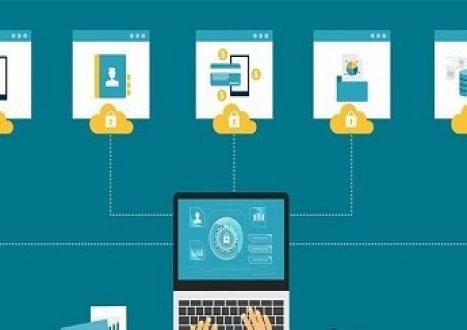



Top CompTIA Certification Exams
Site Search:




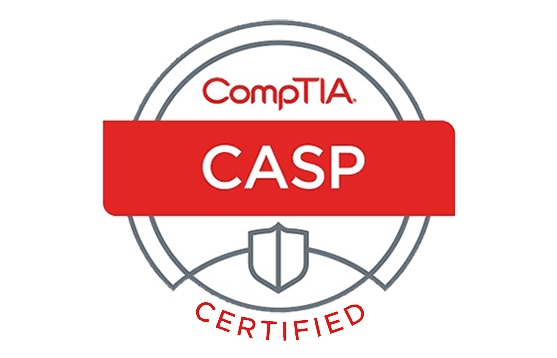
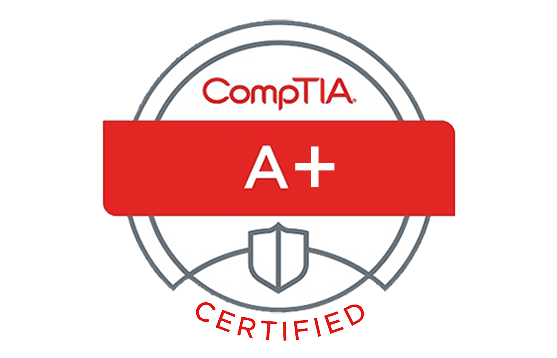
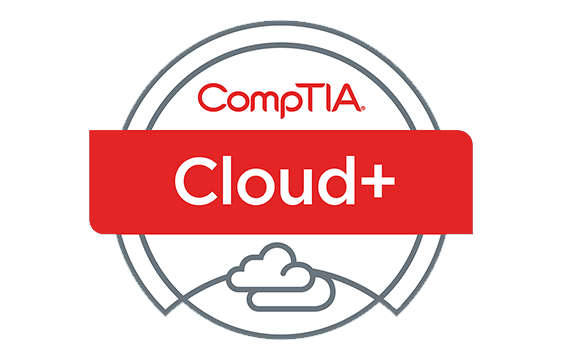
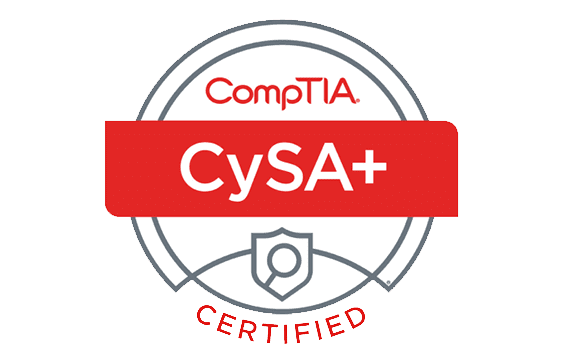
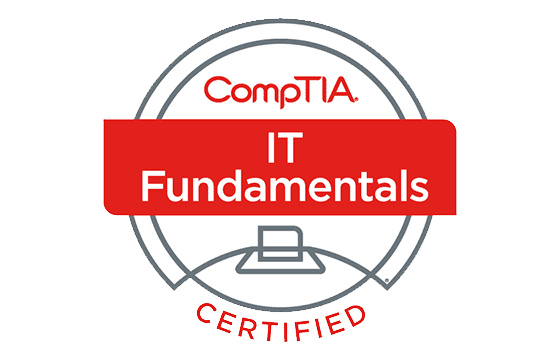

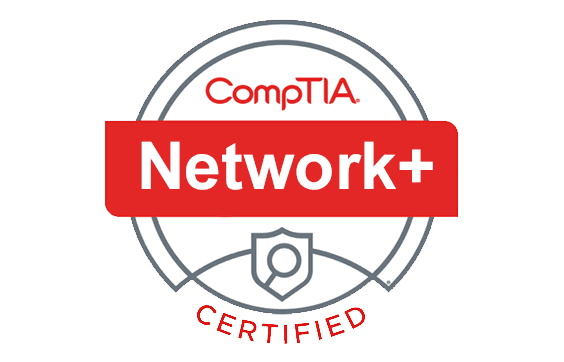

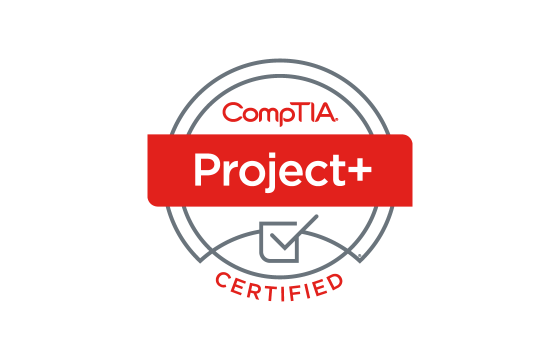
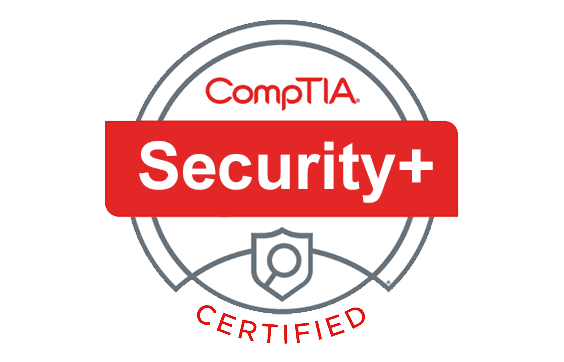





A couple of days ago, I have got my results, and they are even higher than I expected. The CASP exam is not easy, so you need to utilize every resource to form a solid knowledge base. After you do so, you will become a certified specialist just like me.
I had passed my exam, and I have just received a confirmation that I will be among the students who will receive the certification soon. The CASP premium files offered on ExamCollection really work. I took this exam seriously, and success ran after me.
I want to give piece of advice to those who don’t know where to start and how to prepare. Don’t go for the exam without attending some training, using the study guide, and revising with premium files from this site. With the help of this strategy, you will be able to master all the needed topics and get the required skills to pass the test.
Dumps are valid. Got certified beginning of Dec 2020. Probably had 1 question not in the dumps..